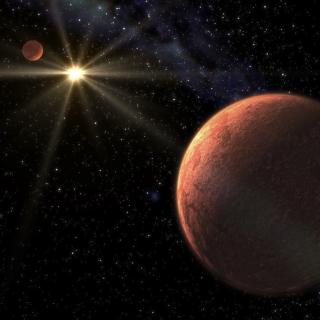Bibcode
Dobbie, P. D.; Day-Jones, A.; Williams, K. A.; Casewell, S. L.; Burleigh, M. R.; Lodieu, N.; Parker, Q. A.; Baxter, R.
Bibliographical reference
Monthly Notices of the Royal Astronomical Society, Volume 423, Issue 3, pp. 2815-2828.
Advertised on:
7
2012
Citations
29
Refereed citations
26
Description
We report the results of a CCD imaging survey, complemented by
astrometric and spectroscopic follow-up studies, that aims to probe the
fate of heavy-weight intermediate-mass stars by unearthing new, faint,
white dwarf members of the rich, nearby, intermediate-age open clusters
NGC 3532 and NGC 2287. We identify a total of four white dwarfs with
distances, proper motions and cooling times which can be reconciled with
membership of these populations. We find that WD J0643-203 in NGC 2287,
with an estimated mass of M= 1.02-1.16 M&sun;, is potentially
the most massive white dwarf so far identified within an open cluster.
Guided by the predictions of modern theoretical models of the late-stage
evolution of heavy-weight intermediate-mass stars, we conclude that
there is a distinct possibility that it has a core composed of O and Ne.
We also determine that despite the cooling times of the three new white
dwarfs in NGC 3532 and the previously known degenerate member NGC
3532-10 spanning ˜90 Myr, they all have remarkably similar masses
(M˜ 0.9-1 M&sun;). This is fully consistent with the
results from our previous work on a heterogeneous sample of ˜50
white dwarfs from 12 stellar populations, on the basis of which we
argued that the stellar initial-final mass relation is less steep at
Minit > 4 M&sun; than in the adjacent lower
initial mass regime. This change in the gradient of the relation could
account for the secondary peak observed in the mass distribution of the
field white dwarf population and mitigate the need to invoke close
binary evolution to explain its existence. Spectroscopic investigation
of numerous additional candidate white dwarf members of NGC 3532
unearthed by a recent independent study would be useful to confirm (or
otherwise) these conclusions.
Related projects

Very Low Mass Stars, Brown Dwarfs and Planets
Our goal is to study the processes that lead to the formation of low mass stars, brown dwarfs and planets and to characterize the physical properties of these objects in various evolutionary stages. Low mass stars and brown dwarfs are likely the most numerous type of objects in our Galaxy but due to their low intrinsic luminosity they are not so
Rafael
Rebolo López